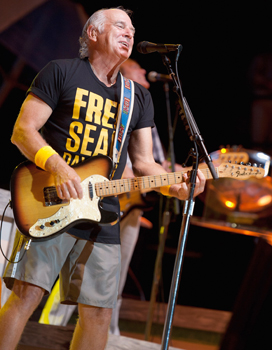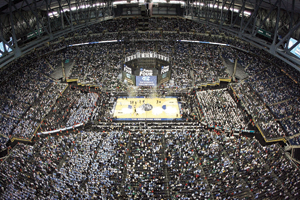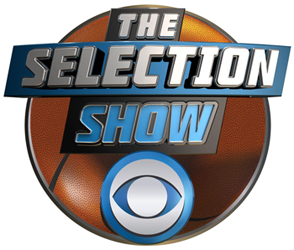Capturing the Madness
When March Madness on Demand (now March Madness Live) launched on CSTV.com in 2005, CBS was offering only
regional TV coverage of the early rounds. MMOD was the only way for viewers to watch any or all of the games being played. The model the first year required a $19.95 subscription before moving to the free model the following year.
“In a lot of ways, MMOD foreshadowed the new partnership [between CBS and Turner] because it was the first time that all of the games were available to the viewer,” said Jason Kint, general manager of CBSSports.com. “Anybody living in the digital world sees it as one of the biggest trendsetters in sports and broadcasting. When we streamed the national championship, open and free to everyone, that was the first time, and you still don’t see a lot of major events offered like that.”
March Madness Live has evolved into a product for tablets and phones. “That’s part of the innovation story,” Kint said. “It keeps evolving every year.”
Final Four entertainment
Coca-Cola became the first NCAA corporate champion in 2002 and immediately established a major initiative: Own the off day. In other words, Coke wanted to own the Sunday between the semifinals and finals.
 |
Jimmy Buffett plays the Big Dance.
Photo by: Getty Images |
It started in 2003 with Dasani Fest in New Orleans, featuring local talent, and has since grown into the “Big Dance,” a three-day music festival on the Friday, Saturday and Sunday of Final Four weekend, each day sponsored by a different NCAA champion: AT&T, Coke and Capital One.
In recent years, acts like Jimmy Buffet, Kings of Leon and Kenny Chesney have performed, and March Madness Live has carried some of the concerts.
“It’s rounded out and really become something that enhances the whole fan experience now,” said Vince Thompson, whose Atlanta-based agency, Melt, has produced each of the Final Four concerts for Coke. “The objective was to put the Final Four on the same level with the Super Bowl, from an entertainment standpoint, and we’ve done that. Coke had the vision and they drove it.”
Moving to prime time
The semifinals and finals moved to the current Saturday-Monday structure in 1973 as NBC, the broadcaster at the time, sought to expand the audience. The championship game, played that year at the Checkerdome in St. Louis, generated a 20.5 rating, and the 13.6 million households were the most ever to watch a college basketball telecast, validating the move to prime time.
“That was a move driven by television, but the basketball committee went along with it because they thought it would provide more people with the opportunity to see the game,” said Tom Jernstedt, the longtime director of the tournament who, coincidentally, started working for the NCAA in 1973. “Putting the game in prime time was definitely a driver for growth of the tournament. There was some thinking, as I recall, that ‘Monday Night Football’ was one of the motivators for the change.”
In the round
More than 70,000 fans have witnessed the championship game each year since the NCAA adopted the “in the round” format in 2009, which put the court in the center of the dome rather than at one end.
 |
The 2009 Final Four in Detroit.
Photo by: Getty Images |
“It’s like an arena on steroids,” said Greg Shaheen, the former NCAA senior vice president who oversaw the tournament in the 2000s and orchestrated the Final Four’s move to the in the round model. “The big piece of the move was that we were at the point where we needed to be able to use the whole building — the suites, all of the amenities.”
The NCAA first saw the center-court model in 2003 at “The BasketBowl,” a game between Michigan State and Kentucky. At the 2005 Final Four in St. Louis, with the court pushed to the edge of one side of the Edward Jones Dome, masses of fans were stuck in concourses that were too narrow to handle so many people. That was the ultimate impetus to move toward a center court, and the concept was finally put into place for the 2009 Final Four in Detroit.
Selection Sunday
When CBS took over broadcast rights of the tournament in 1982, one of the primary goals was to bring “the brackets to life,” said Kevin O’Malley, then the senior vice president and executive producer at CBS. One of the ideas was to capture the drama in the tournament selections with a 30-minute “Selection Sunday” show.
“Back then, people just watched games. They didn’t really understand the round-by-round movement,” O’Malley said. “The selection show brought it all together and gave the tournament a launching point.”
The first “Selection Sunday” show was nearly a disaster, O’Malley remembered. The NCAA was late delivering the brackets, which had to be put on the big boards by hand. Each team was labeled on a placard and inserted into a slot on the big board. As CBS unveiled the East Regional, young production assistants were crawling along the floor like soldiers under barbed wire with the team placards for the other regionals.
Said O’Malley: “We were literally sliding teams into place just minutes before the cameras moved to the next bracket.”
Buzzer-beater central
One of the reasons CBS won the NCAA’s broadcast contract in 1982 was because of its idea to create a studio show and put Brent Musburger at the controls. CBS’s “NFL Today” was the standard for studio shows at the time.
As CBS’s coverage of the tournament evolved through the 1980s, start times for first- and second-round games were staggered so that as one game ended, the network could whip viewers over to the final minutes of another game.
“We made Brent the traffic cop in the studio,” O’Malley said. “I don’t know whether we would have had the confidence to do that without Brent. He had this amazing ability to keep track of all of the games in his head.”
‘The Road’ started here
Once CBS had won the rights to the tournament, the sales team wondered if there was a theme they could use when selling the event. O’Malley, who was in Chicago for meetings, looked out his hotel window as he talked by phone with CBS executives. As he thought about the brackets — and looked down at Michigan Avenue — O’Malley said, “Well, the brackets are like a road, a road to the Final Four.” So that first year of CBS’s deal in 1982, they themed it the “Road to New Orleans.”
O’Malley said, “I go to the Final Four every year and when you get to the airport terminal, there’s always a sign that says, ‘The Road Ends Here.’ Most people have no idea where it came from.”
‘One Shining Moment’
The iconic song that plays at the conclusion of CBS’s coverage was intended to be the wrap-up song for the Super Bowl in 1987. But when the football game ran long and CBS needed to cut away to other programming, the song never played.
Producers decided to reprogram it for the end of the basketball championship.
“It’s now considered the anthem for the tournament,” said Harold Bryant, CBS’s executive producer for the tournament. “Coaches call us all the time seeking last year’s version to show as motivation for their team.”







